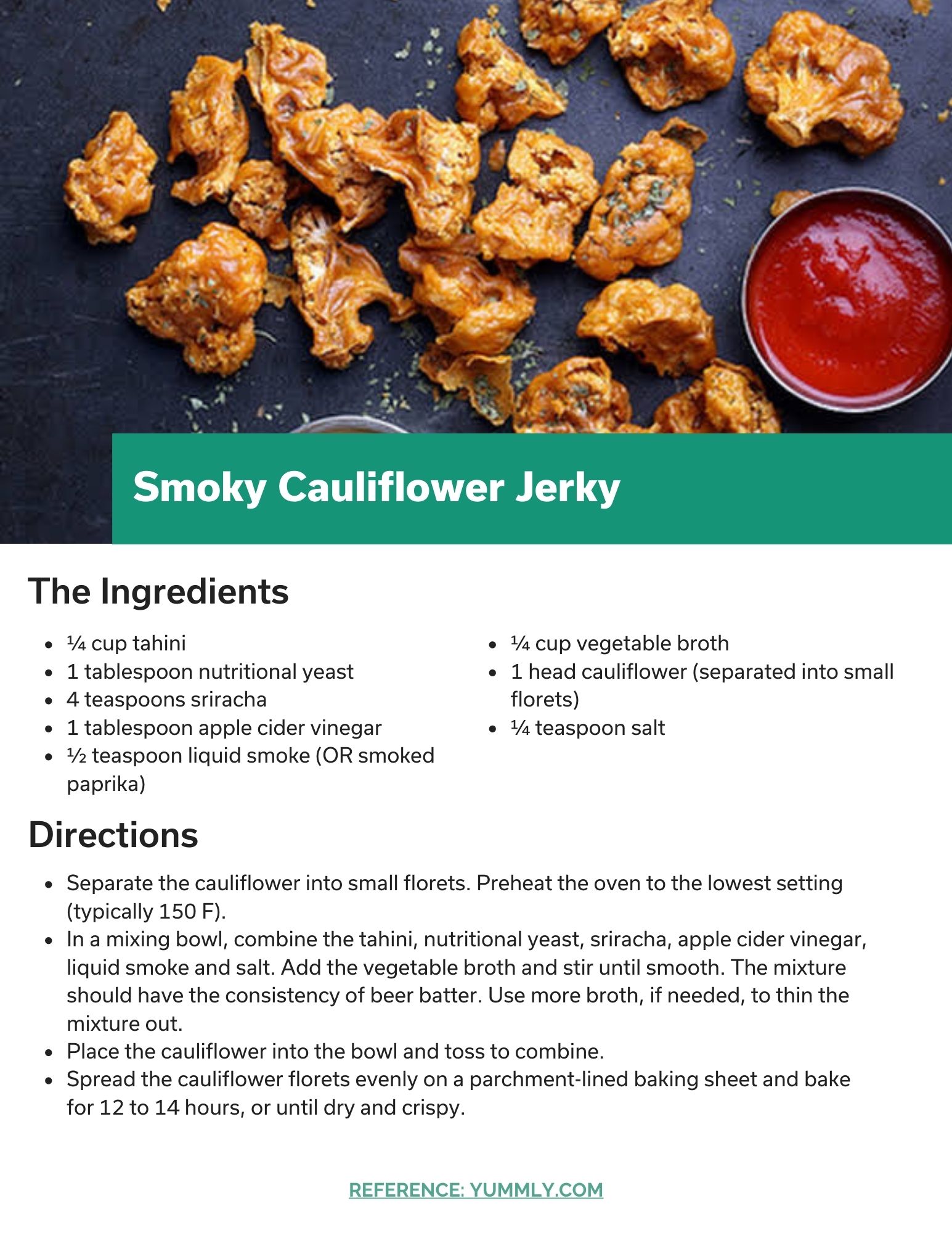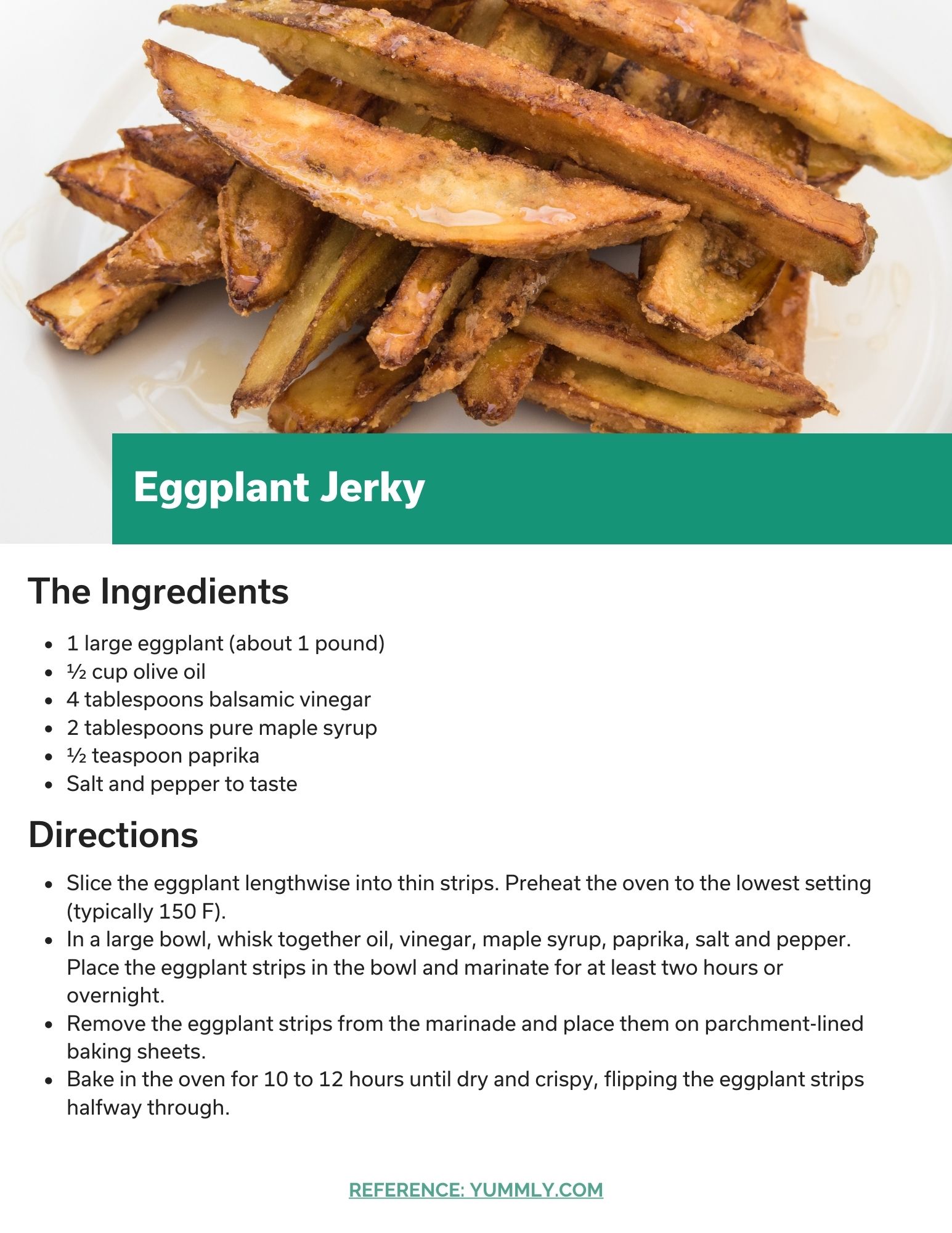Plant-Based Jerky You Can Make at Home
Posted in

Stopping at a local gas station to peruse the snack aisle is one of the guilty pleasures of road trips. People with a sweet tooth tend to reach for candy, while those who prefer savory and salty snacks gravitate toward beef jerky. What used to be made from mystery meat has now transformed into a growing subgenre of healthier snack food alternatives: plant-based jerky.
If you’ve never heard of plant-based jerky or if you’re looking for vegan-friendly snacks, we’re here to offer insight on this new food trend and provide plant-based jerky recipes for you to try at home.
What is plant-based jerky?
Also known as vegan beef jerky, plant-based jerky is an alternative to beef jerky made from dehydrated plants — fruits, vegetables, legumes or grains.
Animal-based jerky is typically marinated and dehydrated to create a chewy texture with a concentrated meat flavor. Here’s the downside, though — animal protein has saturated fat and is processed, both of which can have negative health effects.
Plant-based jerky, on the other hand, is made in a similar process, except they just swap the meat for plants. Jerky made from plants still has some fat and sodium, but it doesn’t contain any saturated fat. These products aren’t just vegan, either. A majority of plant-based jerky is gluten-free, and some brands offer soy-free options for people with soy allergies.
The trend coincides with a general movement away from animal products and toward vegan offerings. For example, fast food restaurants now offer plant-based burgers and you can even buy plant-based “ground meat” at the grocery store.
You don’t have to be vegan to enjoy plant-based jerky, though. People following the flexitarian diet use it as a healthier snack alternative, while others may eat plant-based jerky if they’re trying to cut back on their animal protein intake due to cardiovascular health risks such as high cholesterol. Vegan jerky is also popular among people following a paleo diet or low-carb lifestyle.
How to make plant jerky
Mushroom, watermelon, coconut, banana and soybean are all common fruits and vegetables used to make plant-based jerky. Some brands even use jackfruit, eggplant and other meaty fruits and vegetables to mimic the texture of beef, pork, chicken or turkey. Not only do these plants have a similar meaty texture, they also act as sponges to absorb whichever flavors you add.
Seitan, a meat substitute made from hydrated gluten, can also mimic beef, pork or chicken flavor and texture. This lumpy, Play-doh-like concoction is high in protein and surprisingly low in carbohydrates. You can make seitan at home by mixing vital wheat gluten and chickpea flour with water to form a dough before boiling it in broth.
Many plant-based jerkies are marinated with similar ingredients. Examples include tamari or soy sauce (liquid aminos is a gluten-free alternative) for an umami flavor, liquid smoke to mimic beef roasting over an open flame and some sort of natural sweetener like pineapple juice. Once marinated, the plants are dehydrated to concentrate the flavor and create a similar texture to beef jerky.
Depending on the fruit or vegetable base the jerky originates from, these snacks have protein, dietary fiber, vitamins and minerals. Soybean-based jerky offers protein, iron, calcium and magnesium, while kelp jerky made from brown algae seaweed has found its way to grocery store shelves as a high-protein, soy-free option. Mushrooms are rich in vitamin D, bananas contain high amounts of potassium and coconut is high in fiber and potassium.
Plant-based jerky recipes
Making plant-based jerky at home gives you a creative outlet to explore and try new things. The endless combinations can make it hard to figure out what to make, but we provided three easy recipes that feature ingredients you can find at your local grocery store. The most important thing to know when making plant-based jerky at home is that you don’t need a fancy dehydrator. Using your oven’s lowest setting can provide enough heat to slowly dry out your snacks.
Air fryer mushroom jerky
(click here to download recipe pdf)
Mushrooms are the obvious choice when it comes to selecting a plant alternative to mimic the umami flavor of beef — think mushroom burgers or mushroom meatballs. This recipe takes an Asian route with the addition of soy sauce, sesame oil and rice vinegar. The soy sauce accentuates the umami flavor even more. You can swap out soy sauce for liquid aminos to keep the recipe gluten free. For more on air fryers, read our blog on if they’re worth the hype.
Smoky cauliflower jerky
(click here to download recipe pdf)
If you’ve had cauliflower rice before, then you know this cruciferous vegetable can be on the bland side. In this case, view it as a dry sponge to soak up whatever you add to it. Tahini, made from sesame seeds, provides a creamy element while giving you the savory element of traditional beef jerky. Then there is the liquid smoke to provide a grilled flavor, and the addition of sriracha offers some heat on the backend.
Eggplant jerky
(click here to download recipe pdf)
The firm, yet springy texture of eggplant makes for a great meat alternative. Eggplant is a popular vegetable in Italian and Mediterranean cuisines, so the balsamic vinegar in this recipe plays off those flavors. The olive oil and maple syrup help balance the tartness of the vinegar, while paprika adds a depth of flavor to the eggplant.
For more health trends and wellness content, visit the INTEGRIS Health For You blog.






